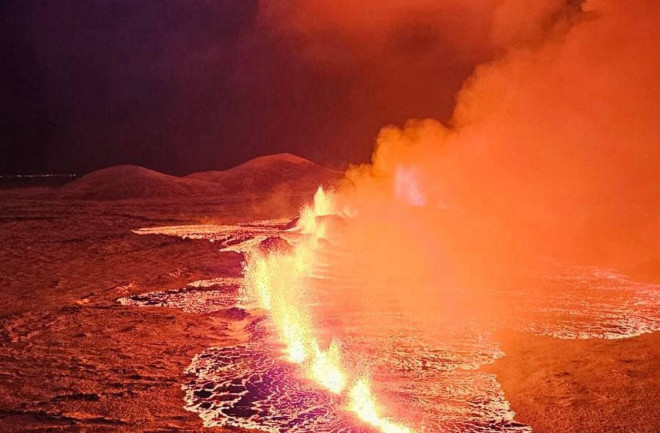For over a month, the town of Grindavík on the Reykjanes Peninsula has been waiting and watching. Although most of the ~3,000 people have been evacuated from the area, authorities in Iceland have monitored the area, measuring thousands of earthquakes, a multitude of cracks in the ground and the release of volcanic gases from these cracks. No one knew if, when and where an eruption might occur.
The waiting is finally over. In the evening of December 18, an almost 2.5 mile (4 kilometer) fissure starting erupting northeast of Grindavík and since then has been producing lava fountains and lava flows.
The eruption began at 10:17 pm local time according to the Icelandic Meteorological Office. At earthquake swarm had begun in the area near Sundhnúkagígar at around 9 pm local time and it was only a little over an hour later that lava finally reached the surface. Luckily, the eruption so far has not been in main part of Grindavík, the Blue Lagoon or the geothermal power plant nearby.
There are some spectacular shots of the eruption that have been taken by local authorities showing the fissure and lava flows. There are also webcams pointed towards the eruption, so you can watch it all happening at home.
I've annotated a few webcam captures from this evening to give you an idea of what's happening. Now, the hardest thing is scale in these images as there are no obvious landmarks to see in the dark. My best guess is that the lava flows are tens of meters tall (maybe hundred feet or more) but that is a guess based on prior activity. So far, the size of the fissure has outpaced those formed during the earlier eruptions on the peninsula since 2020, including the Fagradalsfjall eruption that ended in later summer 2023.
The IMO is already reporting that the eruption is decreasing in intensity -- which, as they point out, doesn't mean it is going to end soon, just that it has reached some equilibrium. Eruptions such as these might last days to months, but anyone saying they know how long it will be is guessing at best. This eruption isn't likely to create any sort of aviation havoc like Eyjafjallajökull did in 2010 except possibly for flights in and out of Reykjavik.
At the moment, the eruption is the best we might have hoped for: an impressive sight that isn't posing direct danger to life and property. We'll see if it stays that way.


